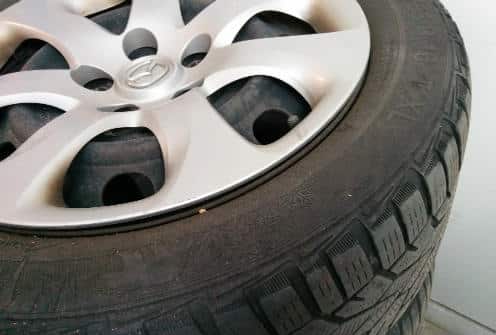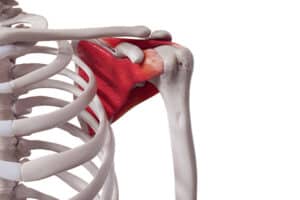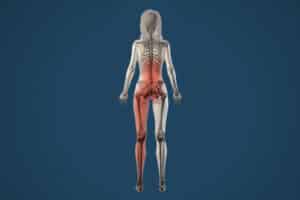Winter Tires

Uses
Snow or winter tires, are specially designed for use on snow and ice. They have a tread design with bigger gaps than other all seasons. Winter variety are designed to be used at temperatures that are less than 7 degrees Celsius (45 degrees Fahrenheit).
Various Types
There are various types:
- Snow (or winter)
- Ones with metal studs for more traction
- Summer
- All-season
Why switch?
This is a very commonly asked question: why should I switch make the switch when the bad weather comes? Most people drive around with a standard set on their vehicle – usually all-seasons.
The snow variety are specially designed to be used during the winter months. They are designed to provide superior handling during winter driving conditions. The snow variety are made from a rubber compound that does not harden in the cold, allowing for a better grip on the road and more traction.
Having a snow variety can reduce your stopping distances by 30 to 40 percent – on snow, ice, and possibly even on cold pavement. Modern ones can offer up to 50 percent more traction than all-seasons.
In winter driving, it is good to be able to stop the car, especially in the event of a possible accident. Driving with summer type or all-seasons do not allow for the same stopping distances.
Symbols
There are some helpful symbols to look for. They can help you to figure out what kind you have.
Three-peaked mountain and snowflake symbol
- You will see this symbol on the side
- It is a three-peaked mountain, with a snowflake inside the mountain
- This symbol indicates winter variety
- Transport Canada acknowledges displaying this symbol meet the specific snow traction performance requirements
- This symbol shows they have each gone through detailed testing
- This includes testing on snow in standardized testing conditions to ensure their snow traction performance meets the minimum industry requirement
Mud and snow symbol (or M+S symbol)
- You can find this symbol on the side
- The symbol is M+S
- This stands for “Mud and Snow”
- These offer better traction than the summer variety
- But, they are less effective than the three-peaked mountain and snowflake variety, for snow and ice – and even in cold weather
In British Columbia, all winter tires need to have a 3.5 mm tread to be considered a winter variety. It’s important to check the tread. Any that are worn down, below 3.5 mm will have reduced traction, and cannot be used for winter driving.
Winter in Canada
In British Columbia, over several years, we mostly had rain. But during the winter of 2016-2017, we experienced several snow events. This included snow days into February and March 2017. Definitely we also need to consider driving conditions outside of the Lower Mainland. If you are driving elsewhere – be ready to drive in those areas – and check the road conditions before leaving for your journey.
As for driving throughout Canada, it’s always a good idea to check what the guidelines are for that particular province. In British Columbia, drivers must obey the driving rules as posted. There are driving guidelines for driving with winter tires and chains between October 1st and March 31st. These will be posted in certain areas (like driving in the Interior of the province). Driving throughout most of B.C. included encountering snow and ice conditions.
The Province of British Columbia has information on winter driving posted here: http://www2.gov.bc.ca/gov/content/transportation/driving-and-cycling/traveller-information/seasonal/winter-driving/winter-tires-and-chains/about-winter-tires
Driving in Vancouver and the Lower Mainland, means driving in a temperate climate. You are not required to purchase winter types. But – be prepared for changing weather conditions, driving to other areas in B.C, or heading to higher mountain conditions (such as Whistler or the Coquihalla Highway).
Purchasing
If you are in the market to purchase tires here is some helpful information for you:
- You are the driver of your own vehicle, and you know the most information about the vehicle
- The driver will be the one making their own choices, about what to purchase
- Individual drivers in Canada, usually drive with all-seasons
- The choice to purchase winter specific ones has a variety of factors:
- The amount of winter weather in your area
- Budget
- Your personal comfort level driving in winter weather – including on snow and ice
- How frequently you drive your vehicle
- How long winter lasts in your area of Canada
Previously Used
After covering different types, there are other things to consider. You can always head to a tire shop, and consult with the sales people. There are a variety of shops and also brands of tires. Another route that is sometimes used is to purchase used tires.
Considerations if you are going to purchase used:
- Some used tires are only slightly worn – they may be worth a look
- There are safety issues when buying used
- Look for defects, punctures, and tread-wear
- Do not purchase tires that have previously been patched or plugged
- Check out the general shape (because they can deflate during storage)
- Worn ones, will not stop as fast, and can skid on wet surfaces
- New ones usually come with a warranty – a used set will not have this warranty
- Make sure that any ones you purchase, will actually fit your vehicle
Consumer Reports makes another good point: “We officially don’t recommend used tires and the basic reason is because you don’t know what you’re getting,” says Gene Petersen, Consumer Report’s head of tire testing. “There’s no way to see the internal structure of the tire.”
Have a look through all of the helpful references below, to help you in your future purchases. Tire safety is an important factor in driving safety.
References
The Tire and Rubber Association for Canada. What You Should Know. Winter 2016: http://www.tracanada.ca/wintertirevideos/whatyoushouldknow.html
Wikipedia – Snow Tire: https://en.wikipedia.org/wiki/Snow_tire
The Government of British Columbia – About Winter Tires: http://www2.gov.bc.ca/gov/content/transportation/driving-and-cycling/traveller-information/seasonal/winter-driving/winter-tires-and-chains/about-winter-tires
BC Government News. October 1, 2014: https://news.gov.bc.ca/stories/a-reminder-that-winter-tire-rules-kick-in-october-1
CBC. Winter Tire Rules Take Effect on B.C. Highways as Soon as the Snow Flies in the Northeast. October 1, 2016: http://www.cbc.ca/news/canada/british-columbia/winter-tires-required-1.3787701
Tirecraft. Winter Tires: https://tirecraft.com/tires-wheels/winter-tires/
How Stuff Works /Auto. 12 Tire Buying Tips. http://auto.howstuffworks.com/buying-selling/cg-tire-buying-tips7.htm
The Globe and Mail. Tread Carefully if You are Buying Used Winter Tires. December 17, 2013: https://beta.theglobeandmail.com/globe-drive/culture/commuting/tread-carefully-if-youre-buying-used-winter-tires/article15985882/?ref=http://www.theglobeandmail.com&







